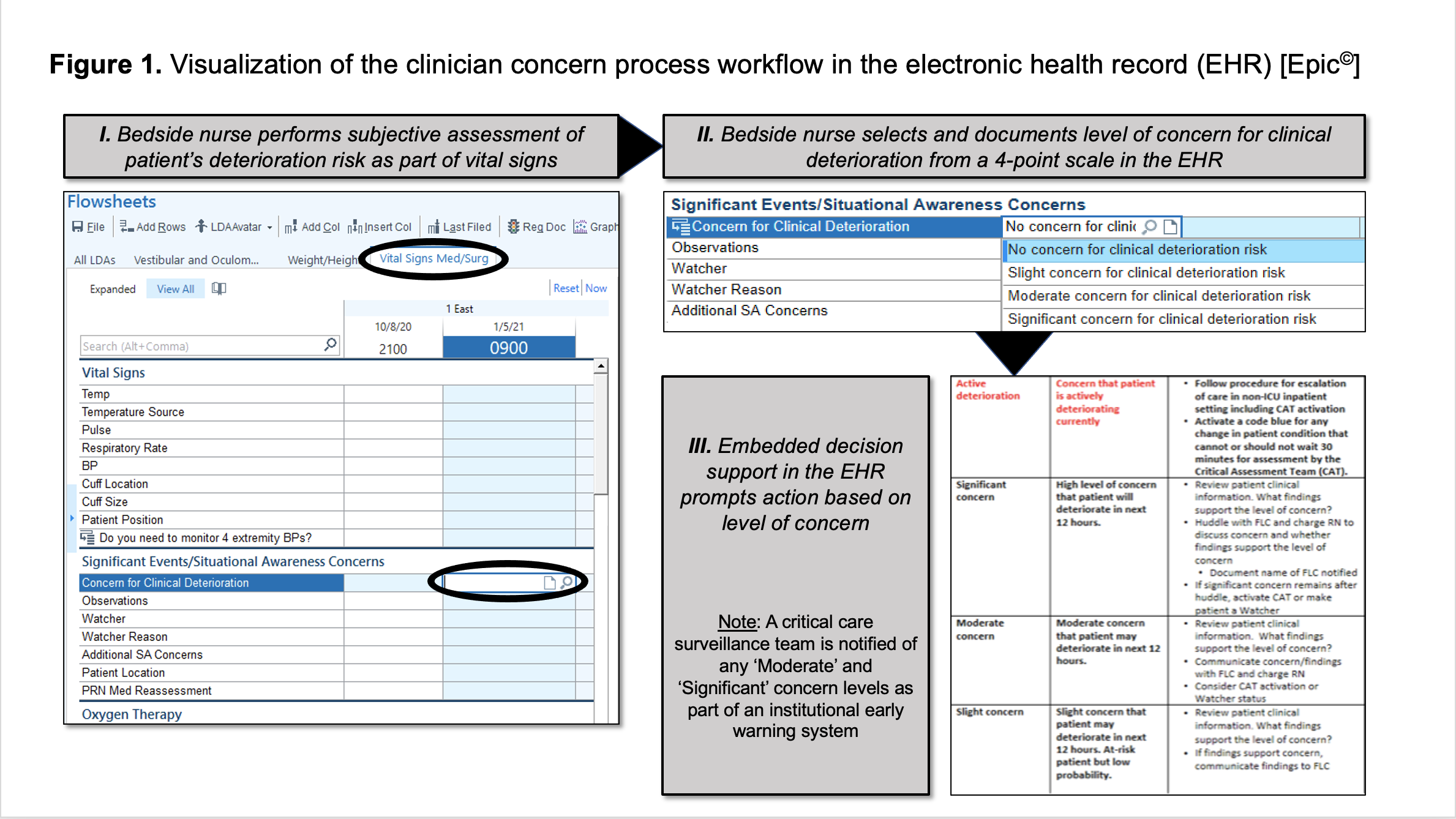Quality Improvement/Patient Safety: All Areas
QI 3: Subspecialty-specific QI & Patient Safety
700 - Acting on ‘Gut Instinct’: Implementation Assessment of a Clinician Concern Process Pilot for Clinical Deterioration
Publication Number: 700.153

Sanjiv D. Mehta, MD (he/him/his)
Research Fellow
The Children's Hospital of Philadelphia
Philadelphia, Pennsylvania, United States
Presenting Author(s)
Background: Unrecognized deterioration poses a significant risk of harm to hospitalized children. Clinician ‘gut instinct’ can enhance detection of deterioration, but a process to systematically capture individual concern has not been described in US hospitals. We embedded a clinician concern process into our rapid response system (RRS) to augment recognition and response to deterioration outside the intensive care unit (ICU). We implemented clinician concern on 4 medical units across February 2021-February 2022.
Objective: This study assessed clinician concern process concordance with other RRS components to inform process design and spread.
Design/Methods:
The clinician concern process asks bedside nurses to subjectively assess and document a patient’s deterioration risk along with other vital signs. There is a 4-point scale of ‘no concern’ to ‘significant concern’ with embedded decision support (Figure 1).
Our RRS includes a ‘watcher’ program; a medical emergency team (MET) of critical care clinicians that responds within 30 minutes; a code blue team who respond immediately; and an ICU surveillance team that proactively monitors patients with identified risk of deterioration.
We used our enterprise data warehouse to capture documented scores, watcher utilization and MET utilization from February 2022 to December 2022 on pilot units – averaging 7 months after implementation across units. We grouped scores into high concern (moderate or significant) and low concern (none or slight). For each score, we assessed whether there was concurrent use of the watcher or MET systems within +/- 12 hours of the documented score. We compared the frequency of RRS component utilization for low and high concern using chi-square test for independence.
Results: We analyzed 94,425 documented scores for 5208 unique admissions on pilot units, including 87,993 ‘no concern’ scores (93.2%); 5,767 ‘slight’ (6.2%); 625 ‘moderate’ (0.7%); and 40 ‘significant’ (0.04%). There were 962 watchers and 383 MET activations on pilot units. Greater than 80% of high concern scores had concurrent watcher or MET utilization (Figure 2). High concern scores were significantly more likely to involve RRS utilization (watcher: 73% vs 6%, OR 46, 95%CI 38-55, p< 0.01; MET: 42% vs 1%, OR 68.8, 95%CI 58-82, p< 0.01) (Table 1).
Conclusion(s): A clinician concern process pilot demonstrated reassuring concordance with the use of existing RRS elements. Future work will seek to understand how clinician concern augments the accuracy of RRS processes to detect deterioration.


.png)
